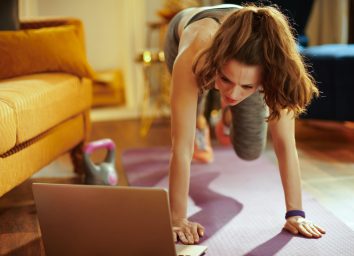Secrets for Walking Your Way to a Longer Life, Say Experts
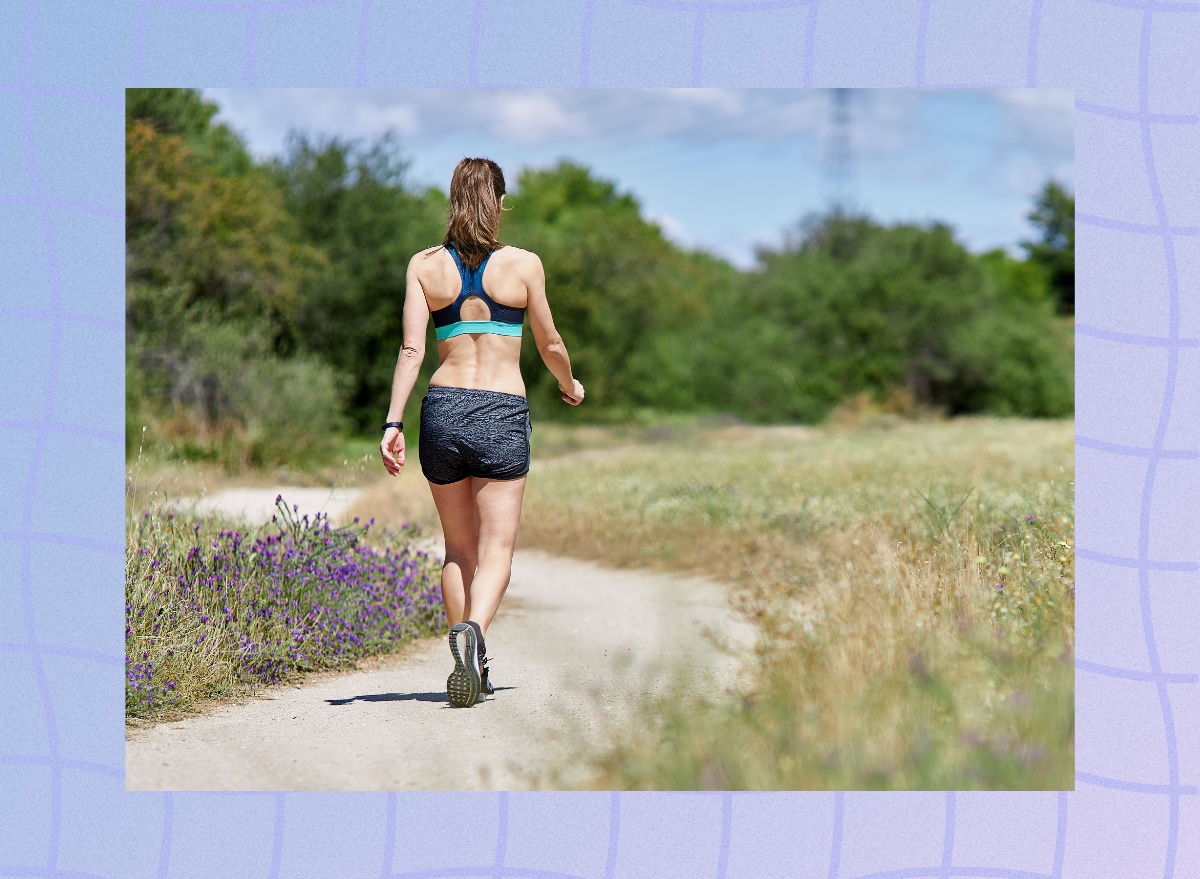
Simply put, the single most important way to walk your way to a longer life is to walk regularly, and, generally speaking, to walk in such a way that you're consistently challenging yourself, enjoying yourself, and not injuring yourself. (And no, you don't necessarily need to aspire to hit 10,000 steps every single day. In fact, a new study from Harvard Medical school notes that women who walk only 4,400 steps per-day are able to "significantly" lower their risk of early death.)
To help you walk more regularly—and to help you keep your walks challenging, fresh, and safe for your body—we reached out to several top doctors and fitness experts for their advice. If walking is your preferred form of exercise—and assuming you're interested in living a longer life—what are the most important things that you should do every day to ensure that you're getting the most out of your walks? Read on for their answers.
Follow these tips, and you'll not only walk more, walk longer, and add years to your life, but you'll also build confidence, get better at letting go of negative thoughts, enhance the quality of your sleep, and boost your creativity. Don't believe us? Just check out the Incredible Things That Happen When You Walk More, Says Science.
Always Perform a Self-Massage—and Stretch—Before You Walk
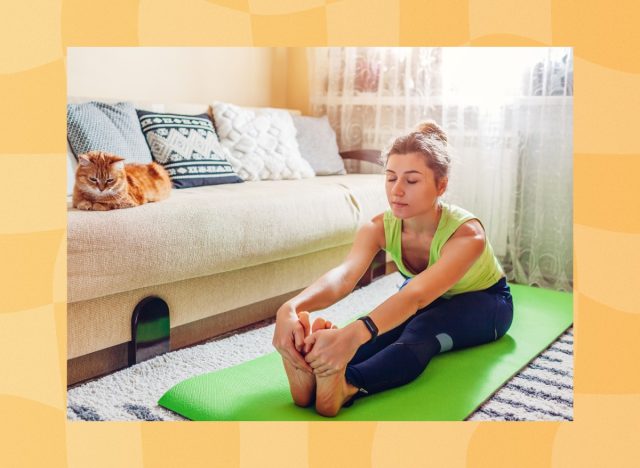
It's common for runners, tennis players, basketball players to stretch and prime their muscles before exercising. The same should be the case for serious, dedicated exercise walkers, says Tom Biernacki, MD, a foot and ankle surgeon based in Michigan. "We see hundreds of people come in every spring with walking pain and injury that almost instantly derails their walking," he says. "Studies are very clear in simple techniques for those starting a walking routine."
According to Biernacki, if you do a 60-second self-massage of your calves, hamstrings, and plantar fascia (essentially the bottom of your feet), you'll have nearly a "50% gain in muscle flexibility." "This massage can be performed with a massage stick or a foam roller for excellent and rapid results," he says. "We like patients to foam roll their glutes, hamstring and then use the massage stick for their calf and arch for just a minute or two, and then move onto stretching."
As for stretching, a simple one to two-minute static stretching routine targeting your quads, calves, hips, glutes, and lower back, can make all the difference. "The combination of massaging and stretching has been shown to reduce overpronation and put less stress on the knees and the lower back," he says. "In our opinion, this is an essential component of any walking routine, and this coming from someone who sees way too many walking routines end in misery!" And for more great walking tips, don't miss The One Type of Walking You're Not Doing Enough Of, Says Science.
Walk With Intention
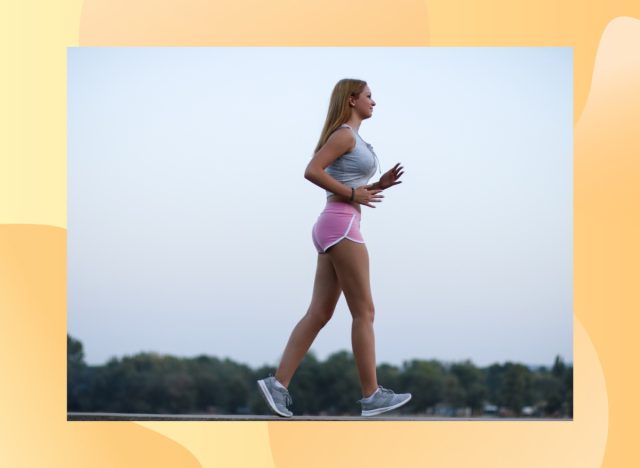
Fact: If you find walking a gratifying and happiness-inducing thing to do, you're guaranteed to walk more, and go for longer. "A study published late last year in the academic journal Emotion revealed that seniors (mostly 60, 70, and 80-year-olds) who set their intention on finding some awe on their weekly outdoor walks were found to have less negative emotions, more positive ones, and were self-described as being happier than the control group," says Allen Klein, a motivational speaker and author of The Awe Factor: How a Little Bit of Wonder Can Make a Big Difference in Your Life. "In addition, the awe-walkers felt less upset and more socially connected."
He notes that the walkers who didn't focus on such intentions tended to focus more on things that were stressful or worried them during their walks. "Since being overly stressed can be bad for our heath, the simple act of setting our intention on finding a little awe on our walks can help us be less stressed, happier, and more connected to others, which are a basis for a longer life," he says. And if losing weight is your goal, don't miss The Secret to Walking Your Way to a Lean Body, Say Experts.
Always Break a Sweat
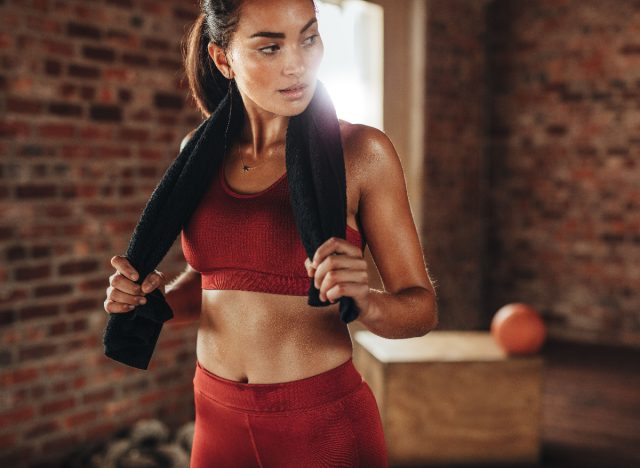
As we've reported countless times here at ETNT Mind+Body, the best walk is a brisk walk, which is loosely defined as walking so fast that you can talk but you can't sing. If you're not going this fast, your heart, your muscles, and your lungs simply won't get the optimal workout—period. So remember: If you're walking for exercise, you've got to get up and go. And yes, that means breaking a sweat.
"Especially with 'long-distance' walks, you should always be breaking a sweat and challenging your body," says Frank Dennison, CPT, of RockBox Fitness. "If you don't feel like you're going anywhere, or you don't feel your heart rate elevating after a few minutes of walking, you should attempt to quicken your pace to help induce these things."
Walk this way, and you could be adding upwards of 20 years to your life.
Get Fitted for Walking Shoes
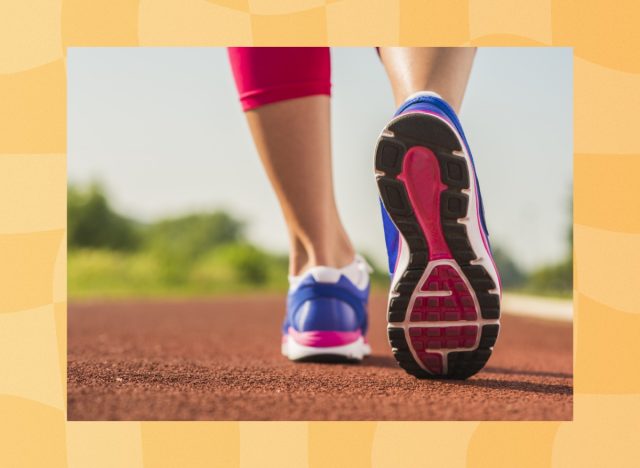
Nothing will abbreviate your walks and make them less enjoyable than feeling the nagging pain that comes from wearing a pair of ill-fitting walking shoes. Just as runners go to the store and try out several pairs of shoes on a treadmill, walkers should do the same.
"You need to get proper-fitting walking shoes," says Lynell Ross, CPT, a psychology-based certified health and wellness coach and resource director at Education Advocates. "Before you start your walking routine, invest in a supportive pair of walking shoes that fit you well. Good fitting shoes can make the difference between an enjoyable walk or a painful one."
If you'd like to invest in great walking shoes, make sure you're aware of The Secret Cult Walking Shoes That Walkers Everywhere Are Obsessed With and The One Pair of Walking Shoes in Your Closet That You Should Throw Out.
Always Mix Up Your Pace
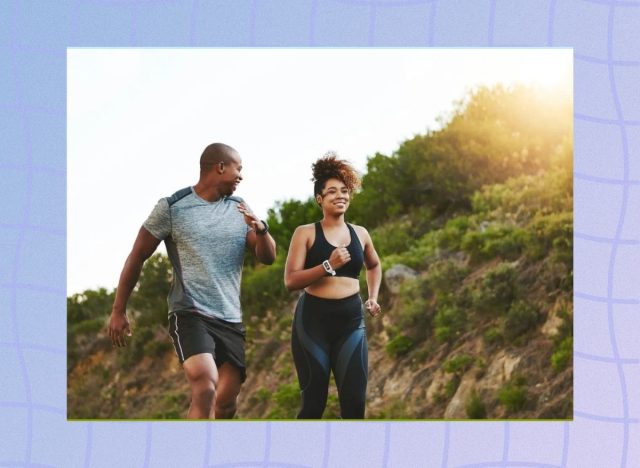
You know that you need to keep your walks fast. But to get even more out of your walks, you should incorporate intervals into your routine. "A great trick for walking is to incorporate some quicker-paced sets into your trip," says Dennison. "For example, for every five minutes of walking, you should walk at a quicker pace for one minute. These intervals will help to keep your heart rate high but also promote recovery between the sets."
See here for One Simple Walking Workout That's an Amazing Fat Burner.
Additionally, if you see any hills along your walks, it'd be wise to take them on. "Taking a 30-minute walk on a steep hill would provide some inconsistency—gradients are rarely smooth and even"—which will make your workout so much better, says Cathy Spencer-Browning, VP of Training at the fitness company Mossa. "If you wanted to walk on a treadmill, try some of the programmed workouts, as they offer a lot more movement variety. Combining hills and flats and different speeds which place different demands on the musculoskeletal system and cardiovascular system."
Dennison agrees. "Walking in areas of incline is also a sly way to burn some extra calories during your walk," he says. "You don't necessarily have to go faster during the inclined sections, because the resistance is already causing your body to work harder. If you're on a treadmill, an incline level of 2-3 is a good place to start for a beginner walker on the treadmill. Gradually changing the incline level during your walk will also help to increase intensity and raise your heart rate."
Try a Walking Meditation
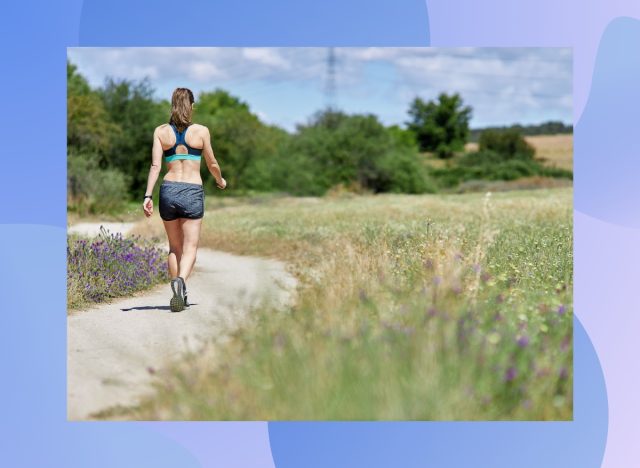
Like walking with more intention, one surefire way to walk more is to make your walks more enjoyable and gratifying. One great way to do this, says Ross, is to ditch the headphones and make your walk more meditative.
"People who spend time outside and in nature report feeling happier, more connected to themselves and their spirituality," says Ross. "When you walk, instead of listening to a podcast or music, try noticing the world around you. See how many different birds, animals or plants you can spot. Try to be aware of things you might normally have missed. Doing a walking meditation daily can be a way to heal your mind as well as strengthen your body."
If you do this, you won't only strengthen your body and your heart, but you'll relieve stress and anxiety—which will also help you prolong your life.
Yes, Walk Even When You're Not "Exercising"
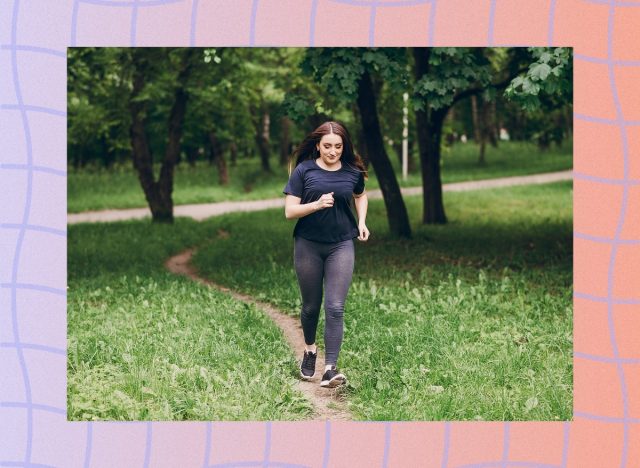
Remember that your body doesn't care if you're wearing clothes made by Nike or a pair of old jeans: Walking is walking. Don't just do a 30-minute walk a call it day. Fit in walks wherever you can. "Use walking as a means of transportation," says John Gardner, an NASM-certified personal trainer and CEO of Kickoff. "The best way to ensure you include walking in your daily activities is by making it a means of transportation as much as possible. Instead of taking the bus, driving or looking for a ride, walk to your destination. This can help you get even more walking each day." And for more on getting the most out of your walks, don't miss The Secret Side Effects of Walking Before Breakfast, Says Science.

